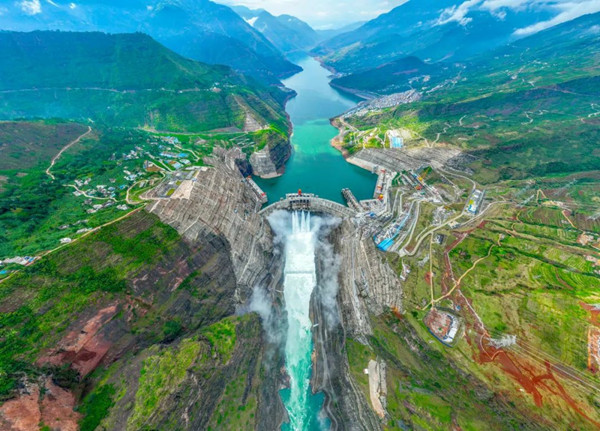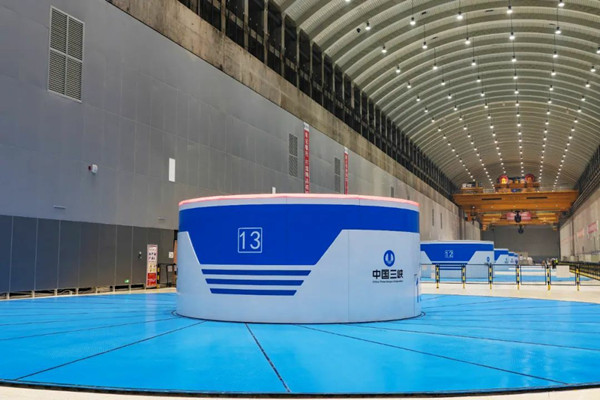The No. 13 generator unit at the Baihetan Hydropower Station was put into commercial service after 72 hours of trial operation on Sept 18.
It is the 11th 1 million-kilowatt hydropower generator unit in operation at the station and the 105th operating over the trunk stream of the Yangtze River built and operated by China Three Gorges Corporation (CTG).

A view of the Baihetan Hydropower Station located over the main stream of the lower Jinsha River in Southwest China's Sichuan and Yunnan provinces [Photo/sasac.gov.cn]
Located over the main stream of the lower Jinsha River in Southwest China's Sichuan and Yunnan provinces, the Baihetan Hydropower Station is the largest and most difficult-to-build hydropower project under construction in the world.
It is designed to be equipped with 16 generator units with single capacity of 1 million-kW hydropower.

A view of the No. 13 generator unit of the Baihetan Hydropower Station [Photo/sasac.gov.cn]
The No. 13 generator unit is the fourth to be launched on the right bank of the river after Nos 14, 15, and 16. Its installation started in September 2020.
At present, there are eleven 1 million-kW generator units in stable operation with good performance. So far, the station has generated more than 40 billion kilowatt-hours of clean power.
Once fully operational, the station is expected to be the world's second-largest hydropower station and to generate more than 62.44 billion kWh annually.
By then, the world's largest clean energy corridor consisting of the Wudongde, Baihetan, Xiluodu, Xiangjiaba, Three Gorges and Gezhouba cascade power stations will be formed. Meanwhile, CTG will have 110 hydropower generator units that operate over the trunk stream of the Yangtze River with a total installed capacity of nearly 71.7 million kW.
With huge power generation and peak load regulation capacities, the clean energy corridor is expected to effectively relieve power shortages in Central and East China as well as Sichuan, Yunnan and Guangdong provinces.
In addition, it will play a key role in guaranteeing stable and safe operation of the country’s power grid and will continuously provide green power for the development of the Yangtze River Economic Belt and the nation's economy.
Last but not least, the corridor will also contribute to realizing China's "dual carbon" goals of peaking carbon dioxide emissions by 2030 and achieving carbon neutrality by 2060.
(Executive editor: Wang Ruoting)